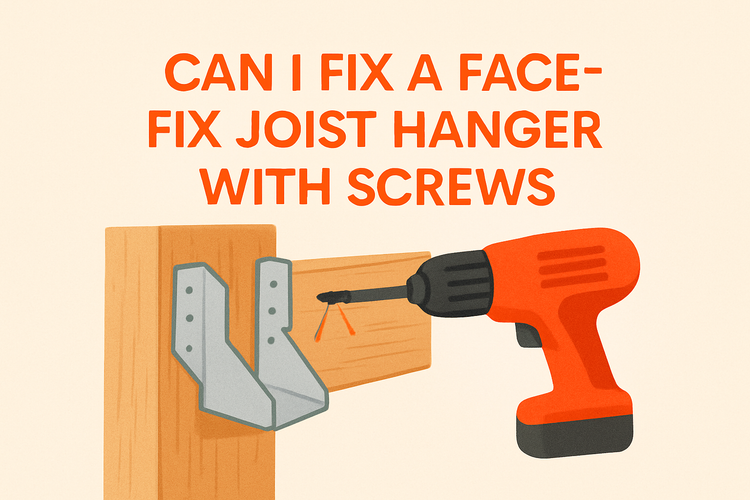Can I Fix A Face Fit Joist Hanger With Screws

Can You Fix a Face-Fit Joist Hanger with Screws?
Yes, face-fit joist hangers can be fixed using appropriate screws, but it’s important to ensure you're using the right type to maintain structural integrity. Choosing screws specifically designed for joist hanger applications ensures durability and compliance with building regulations.
Selecting the Right Screws for the Job
Face-fit joist hangers require screws that are strong enough to handle load-bearing installations. Not all screws are created equal, so using standard wood screws might result in failure under pressure. The best choice is structural screws or screws specifically rated for use with metal connectors.
Manufacturers often specify the type, length, and gauge of screw needed for proper performance. Using alternative fasteners that aren’t recommended can lead to compromised strength. Always refer to guidelines provided with your joist hangers or from reputable structural accessory providers to ensure compatibility.
Self-tapping structural screws provide an efficient alternative to nails, especially in tight spaces or for retrofitting projects. They are easier to handle, require less manpower, and don’t split timber like nails sometimes do. Just make sure to drive them fully and squarely through the hanger holes.
Installation Techniques for Optimal Strength
Installation is as critical as fastening type. Ensure that joists are correctly seated in the hangers and that there is no displacement or gapping. Inaccurate positioning can significantly reduce the performance quality of the face-fit hanger.
Begin by aligning the hanger correctly against the supporting structure. Pilot holes are not usually necessary if you're using self-drilling screws, but can be helpful in hardwoods. When fixing the hanger, insert screws into every designated hole to ensure it meets strength ratings and avoids structural weaknesses.
The use of products from categories such as Screws and Nails is crucial to ensure a secure and lasting bond. Reinforcing corners with angle brackets can also improve structural rigidity when required.
Comparing Screws to Nails in Joist Hanger Applications
While traditional joist hanger installations often rely on nails, screws are becoming more popular due to their holding strength and ease of installation. Structural screws allow better control during placement and reduce the risk of wood splitting or misaligned fixing.
Nails, typically galvanised or stainless steel, have been trusted for decades and provide flexibility and shock absorption. Screws, however, offer greater pull-out resistance which is crucial for long-term performance in loaded applications. For face-fit hangers, screws help maintain precise alignment, especially in retrofit work.
Ultimately, the choice depends on the job, material, and joist span. Many modern joist hanger manufacturers now supply or recommend specific screws. Check with your hardware supplier under Joist Hangers to ensure you're using compatible fasteners.
Common Mistakes to Avoid When Using Screws
Incorrect fastener choice is a common mistake. Using drywall screws or non-structural wood screws may fit physically but can lead to failures when the hanger is under load. It's crucial to use screws explicitly rated for structural or metal connector fixing.
Another mistake is misaligning the hanger or installing fewer fasteners than required. Skipping holes may save time, but significantly reduces load capacity. Additionally, overdriving screws can damage timber or deform the hanger, affecting its structural role. Always follow manufacturer installation guides and use a torque-controlled driver when needed.
Finally, mixing fasteners—some screws and some nails—can introduce inconsistencies in load distribution. Stick with one approved method per hanger. For guidance, explore the Screws and Nails section where appropriate options are curated for structural applications like joist hangers.
Ensuring Long-Lasting Performance: Finishing and Inspection
After installation, thorough inspection ensures the face-fit joist hanger is properly fixed and aligned. Check every screw for depth and placement; they should sit flush without cracking the timber or protruding from the hanger body.
Preventative care includes checking for rust-resistant coatings, especially in outdoor or high-moisture environments. Galvanised or stainless steel screws resist corrosion and maintain integrity over time. For added security in heavy-duty applications, combine hangers with supplementary supports like angle brackets.
Periodically inspect the installation if the joists are exposed or accessible. Early identification of any loosening or deformation can prevent structural failure. Proper fastening complemented with the right components makes a huge difference in the durability and safety of timber frame applications.
